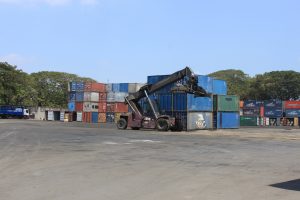
Quito, Aug 10 (EFE).- A new center to screen freight bound for Ecuador’s Galapagos Islands, to be located at the Port of Guayaquil, will help combat the unwanted introduction of invasive species into that biodiverse archipelago.
The president of the Galapagos Governing Council, Eliecer Cruz, told EFE that the freight consolidation center would be built on three hectares (7.4 acres) at an estimated cost of $10.5 million, with the funds to come from a public-private partnership.
The center is “a response to the pressing need to carry freight” from continental Ecuador to the archipelago, Cruz said, adding that the introduction of invasive species to those islands, recognized as a UNESCO World Heritage Site in 1978, is the main risk to the island’s biosecurity.
“The cheapest way to control the species introduced to the islands is to prevent them from coming in, and one of the alternatives is to carry out all the phytosanitary controls upon departure from Guayaquil for Galapagos, as well as also obviously carrying out checks” on the islands, he said.
Three ships, one of them state-owned, currently carry freight from different wharfs at the Port of Guayaquil to the archipelago, located about 1,000 kilometers (620 miles) off the coast of continental Ecuador.
That makes it more difficult and expensive to carry out the necessary screening, he said, citing a lack of biosecurity personnel. He added that the center would consolidate the Galapagos-bound freight and ensure that all of it undergoes strict phytosanitary and quality controls.
Mosquitoes and other insects, as well as green iguanas from continental Ecuador and snakes from the coast, are among the animals that have been introduced to Galapagos, according to Cruz, who noted that “more than 40 percent of Hawaii’s endemic biodiversity has been lost due to introduced species.”
Some 30,000 people live permanently on the Galapagos Islands, which receive around 220,000 tourists annually and between 5,000 and 5,500 tons of food, construction materials and other goods every month.
